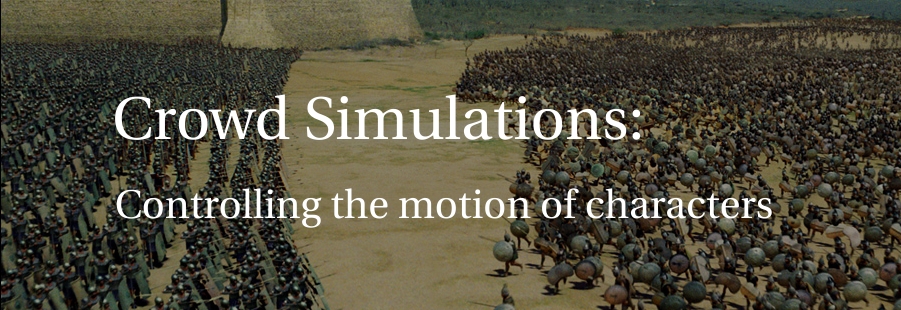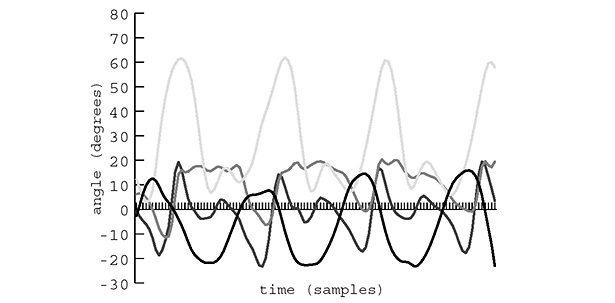
Crowd Simulations are becoming ever more prevalent in today's films and with this demand for large scale crowd interactions comes the need for even greater realism from the director and better efficiency from the visual effects house. Many would argue that the standards set by Weta and The Moving Picture Company for films like Lord of the Rings (LOTR), Troy and Kingdom of Heaven are already good enough to convince even the most eagle-eyed of cinema goers, but there are still limitations to even the most professional of systems.
Generally, large crowd shots have real actors taking up the first few rows closest to the camera and rarely does the camera get close enough to the character to see individual detail. The mass confusion of the crowd and quick panning of the camera mask a lot of the characters' animation. The image to the right is a wire-cam shot that was used in Troy to film the two armies clashing. The camera starts off high up to capture the scale of the fight and then runs down the wire getting lower capturing more of the detail. At the point in the middle where the camera is closest to the crowd there is a small group of real actors. - Do we still need this small group of actors or have we got to the stage of fully CG crowds?
Greater realism is always being strieved for, but in order to create these highly technical shots, getting the final result in time and on budget is considered just as important by the effects houses, who is always looking to make its tools more efficient and reusable. In LOTR:The Two Towers, 55 hours of motion capture data was used and the large majority of that data was for the crowd battle scenes. - Do we really need this much motion capture data or can we create are own animations from just one set of motion capture data?
This website looks at the current techniques used to create the animation of the crowd characters and investigates areas of research, which could be utilised to make for more real and efficient crowd simulations. There are many areas of research into different types of motion data editing, and this website evaluates, which solutions could be implemented in a crowd simulation and how combinations of different techniques, could be used to used to achieve the intended goals.
Motion Capture Data Editing
Motion Capture (Mocap) has been utilised in many crowd systems since its first introduction into the film industry, and provides extremely real representations of human motion, which can be captured and applied to thousands of skeletons without too much trouble. Mocap is very good at what it does, but it does have its draws backs and this is why substantial reasearch has gone into improving the manipulation of Mocap data.
There are two key issues with Mocap data as summarised by M. Jung et al (2000):
1) The data is most certainly inconvenient for editing. Motion capture systems typically provide a pose for every sample or frame of the motion, not just at important instants in time. This means that a lot of data must be changed to make an edit. Also, motion capture data often uses skeletons parameterised in a mathematically convenient manner with strict hierarchies and measurements relative to a reference pose, whereas hand-made data often creates a skeleton that is more natural for manipulation.
2) There is nothing but the data to describe the properties of the motion. There is little indication in the data to show what the important properties of the motion are, and what should be changed to effect the motion. Only basic labelling can be realistically applied to the motion to describe the intent of the motion, in order for someone to understand what is going on.
The graph below shows animation curves taken from a walking motion captured in this manner. Each curve on the graph represents a different joint on the character.
Mocap represents a motion as a dense set of data: there is a number (sample) for every instant in time. A by-product of this is that there a lot of numbers. This provides an opportunity for the Mocap data to represent more fine details than sparser keyframes. The downside is that motion capture data has lots of data that must be manipulated in editing. When dealing with a dense representation of motion data, changing a single value only alters the pose of the character at that one instant in time.
Listed below are the different techniques used for editing Mocap data and each has a section on this website that describes how best it can be integrated into a crowd simulation pipeline.
Motion Blending
Motion Warping
Physically-based Approach
Kinematic Approach
Skeletal Deformation


